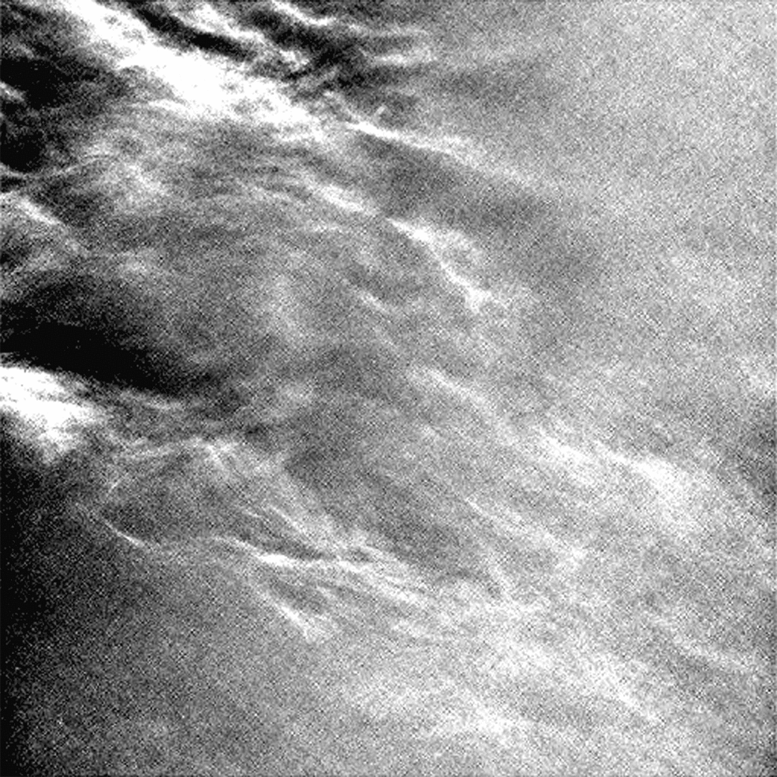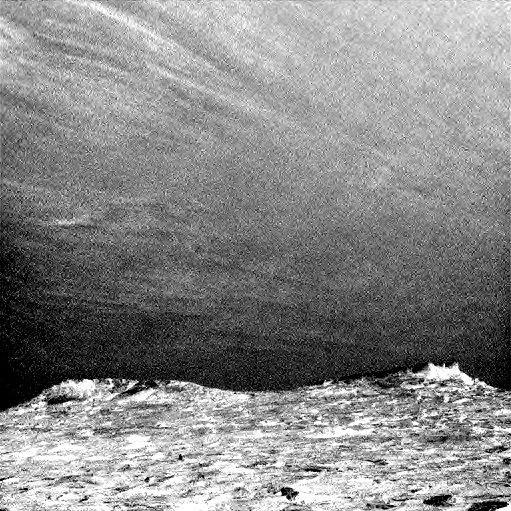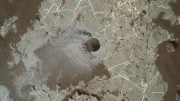
Wispy clouds float across the Martian sky in this accelerated sequence of enhanced images taken on July 17, 2017, by the Navcam on NASA’s Curiosity Mars rover. Credit: NASA/JPL-Caltech/York University
New images from NASA’s Curiosity Mars Rover show wispy, early-season clouds resembling Earth’s ice-crystal cirrus clouds moving across the Martian sky.
These clouds are the most clearly visible so far from Curiosity, which landed five years ago this month about five degrees south of Mars’s equator. Clouds moving in the Martian sky have been observed previously by Curiosity and other missions on the surface of Mars, including NASA’s Phoenix Mars Lander in the Martian Arctic nine years ago.
Researchers used Curiosity’s Navigation Camera (Navcam) to take two sets of eight images of the sky on an early Martian morning last month. For one set, the camera pointed nearly straight up. For the other, it pointed just above the southern horizon. Cloud movement was recorded in both and was made easier to see by image enhancement. A midday look at the sky with the same camera the same day showed no clouds.

Clouds drift across the sky above a Martian horizon in this accelerated sequence of enhanced images taken on July 17, 2017, by the Navcam on NASA’s Curiosity Mars rover. Credit: NASA/JPL-Caltech/York University
Mars’ elliptical orbit makes the planet’s distance from the Sun vary more than Earth’s does. In previous Martian years, a belt of clouds has appeared near the equator around the time Mars was at its farthest from the Sun. The new images of clouds were taken about two months before that farthest point in the orbit, relatively early in the season for the appearance of this cloud belt.
“It is likely that the clouds are composed of crystals of water ice that condense out onto dust grains where it is cold in the atmosphere,” said Curiosity science team member John Moores of York University, Toronto, Canada. “The wisps are created as those crystals fall and evaporate in patterns known as ‘fall streaks’ or ‘mare’s tails.’ While the rover does not have a way to ascertain the altitude of these clouds, on Earth such clouds form at high altitude.”

Wispy clouds float across the Martian sky in this accelerated sequence of early-morning images taken on July 17, 2017, by the Navcam on NASA’s Curiosity Mars rover. Credit: NASA/JPL-Caltech/York University
York’s Charissa Campbell produced the enhanced-image sequences by generating an “average” of all the frames in each sequence, then subtracting that average from each frame, emphasizing any frame-to-frame changes. The moving clouds are also visible, though fainter, in a sequence of raw images.









Be the first to comment on "NASA’s Curiosity Watches Clouds Move Across the Martian Sky"